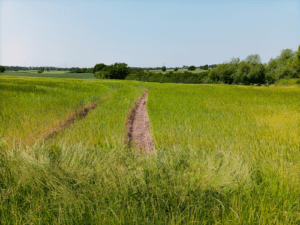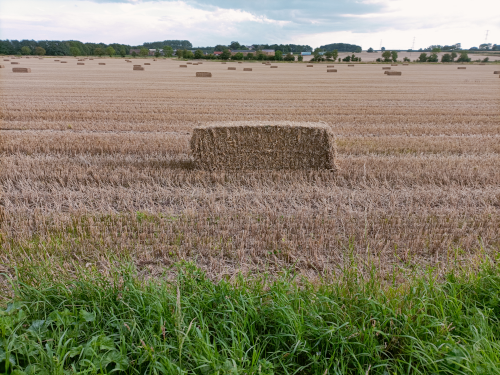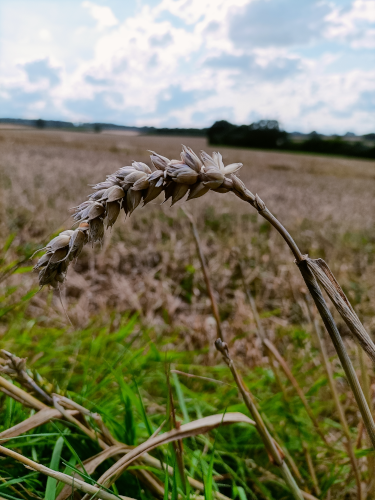Wheat, a primary staple food ingrained in human history, has significantly shaped cultures, economies, and diets around the world. Let’s embark on a journey to explore this marvelous grain, from its origin, and varieties, to its diverse uses.
The botanical name for wheat is Triticum aestivum. Wheat is not a singular entity but a complex assortment of varieties tailored to different climates, soils, and end-uses. Some primary varieties include:
- Triticum aestivum (Bread wheat or common wheat): This is the most widely cultivated wheat species.
- Triticum durum (Durum wheat): Used primarily for semolina and pasta production.
- Triticum spelta (Spelt): An ancient grain variety, often used in organic and health foods.
- Triticum dicoccum (Emmer): Another ancient wheat species, less common today.
- Triticum monococcum (Einkorn): The oldest and simplest form of cultivated wheat.
Essentially, understanding and predicting weather patterns is of paramount importance for wheat farmers worldwide. The delicate interplay of sun, rain, heat, and cold dictates the success of this staple grain, highlighting the intricate balance of nature in our daily lives.
Wheat Growing Regions
Wheat thrives in temperate zones and is cultivated on every continent except Antarctica. The major wheat-producing countries include China, India, Russia, the United States, and France. Depending on the climate and the type of wheat, sowing and harvesting times vary, but the vast wheat belts cover both the Northern and Southern Hemispheres.
Life Cycle of Wheat
Seeds: Wheat begins its journey as a small seed, consisting of the embryo, endosperm, and bran. Each grain can give rise to a new wheat plant.

Planting: Depending on the variety, wheat is planted in either spring or winter. Winter wheat, sown in the fall, lies dormant during the cold months and starts germinating as the temperature rises. Spring wheat, on the other hand, is planted as soon as the soil can be worked and requires less time to mature.
Growth: After planting, green shoots emerge, forming tillers. These tillers grow upward and produce heads containing the grain. As the plant matures, these grains fill with starch and protein, turning from green to golden.
Harvesting (with a Combine Harvester): When the wheat is ripe, farmers use combine harvesters. These complex machines combine the processes of reaping, threshing, and winnowing. The grain is separated from the chaff and stored, while the remaining straw is left on the field.
Hay and Bailing: If the straw is to be used as fodder, it can be made into hay. After drying in the field, it’s gathered and compacted into bales using balers. Hay bales, whether round or square, are easier to handle, transport, and store.

Different Varieties of Wheat
- Hard Red Winter (HRW): Known for its strong gluten content, it’s primarily used for bread and hard baked goods.
- Hard Red Spring (HRS): With a high protein content, it’s perfect for bagels and crusty bread.
- Soft Red Winter (SRW): Lower in protein, this wheat is preferred for cakes, pastries, and flatbreads.
- Hard White: Used for whole wheat products due to its mild flavor and light color.
- Soft White: Ideal for Asian-style noodles, cereals, and snacks due to its soft milling characteristics.
Common Uses of Wheat
Food
From bread, pasta, and pastries to cereals and noodles, wheat dominates our diet. Different varieties cater to different culinary needs, dictating texture and taste.
Alcoholic Beverages
Fermented wheat forms the base of many alcoholic drinks, including some beers and whiskeys.
Animal Feed
Wheat, especially its by-products like bran, serves as fodder for livestock.
Non-Food Uses
Wheat derivatives, like wheat gluten, are used in the cosmetic industry and as binding agents in several products
Weather Influence on Wheat Cultivation
Weather plays an instrumental role in the growth, development, and yield of wheat crops. As with many agricultural products, the delicate balance of nature significantly influences the fate of wheat, from germination to harvest.
Temperature Extremes
Wheat is inherently a cool-season crop, but its different varieties have evolved to withstand a range of temperatures.
Heat: High temperatures, especially during grain-filling stages, can reduce the period available for the grain to mature, leading to shriveled kernels and lower grain weights. Excessive heat can also cause premature sprouting and reduce the quality of wheat, affecting flour production and baking characteristics. Prolonged heat without adequate water can stress the plant, leading to reduced yields.

Cold: Winter types of wheat, like the Hard Red Winter, have a certain cold requirement, known as vernalization, to transition from vegetative to reproductive growth. However, extreme cold without adequate snow cover can cause winterkill, damaging the crowns of the wheat plant and reducing the potential for spring regrowth.
Rainfall and Moisture
While wheat requires moisture for germination and early growth, the amount, distribution, and timing of rainfall can influence both yield and quality.
Adequate Rainfall: Timely rains during tillering and early jointing stages can significantly bolster wheat yields by promoting optimal plant growth and grain filling.
Excessive Rainfall: Conversely, heavy and prolonged rain, especially during harvest, can be detrimental. It can cause lodging (where wheat stems break or plants fall over), making harvest difficult. It also promotes fungal diseases like fusarium head blight, which affects grain quality.
Drought: Insufficient rainfall, especially during critical growth stages, can lead to drought stress, reducing grain size and overall yields. Drought can also exacerbate heat stress, further diminishing crop potential.
Growing Wheat at Home
- Selecting the Right Variety
Choose a wheat variety suitable for your region. In the USA, the Midwest often opts for Hard Red Winter Wheat, while the UK, with its maritime climate, typically chooses a winter wheat variety like ‘Claire’ or ‘Cordiale’. - Soil Preparation
Type: Wheat prefers well-draining soil with a pH level of 6.0 to 7.5.
Tilling: Prepare the soil by tilling or digging to a depth of about 6 inches, removing any weeds or stones. - Fertilization
Prior to sowing, integrate a balanced fertilizer, preferably one rich in nitrogen. - Sowing
In the USA and UK, the ideal sowing period for winter wheat is from mid-September to mid-October. Space the seeds about 1-2 inches apart and 1-1.5 inches deep. For smaller plots, hand sowing or broadcasting followed by raking can ensure good seed-to-soil contact. - Maintenance
Watering: Water the seeds initially to ensure good germination. Once established, water regularly but avoid waterlogging.
Weed Control: Regularly monitor for weeds and remove them manually or with the aid of a hoe. Avoid chemical herbicides unless absolutely necessary. - Pest and Disease Management
Monitor for common wheat diseases like rust or septoria leaf blotch. In the event of an outbreak, consider using organic fungicides. Watch out for pests like aphids or the cereal leaf beetle and manage with organic or recommended pesticides. - Harvesting
Wheat is ready to harvest when the stalks turn golden and the grains harden, typically after 7-8 months of planting. Use sharp gardening shears to cut the wheat stalks. Bundle the cut stalks and let them dry in a sunny, airy location for 7-10 days. - Threshing and Winnowing
Threshing: After drying, thresh the wheat by beating the bundles to separate the grains from the heads.
Winnowing: To separate the grain from the chaff, pour the threshed wheat from one container to another in a gentle breeze or in front of a fan. The heavier grains will fall straight down, while the chaff will blow away. - Storage
Once cleaned, store the wheat grains in a cool, dry place, preferably in airtight containers, to prevent moisture and pests.
Growing wheat at home may seem challenging given its scale in commercial cultivation but with the right tools and dedication, it can be a rewarding venture.
Conclusion
Wheat is not just a staple grain, it is an embodiment of human innovation and cultivation. From a tiny seed to a golden field swaying in the breeze, to the loaf of bread on our table, the journey of wheat is a testament to nature’s bounty and human perseverance.
The above information, especially in relation to growing your own wheat at home, is only for general entertainment purposes. Always seek professional advice before undertaking this or any other task inspired by the information on the AboutPlants.com website, or any other site that is linked to from this website.
Do not eat anything you have grown following any instruction on this website without verifying it is safe and suitable for consumption with a suitably qualified professional first.
We hope that you have found the above information about the grain, wheat, to be insightful. If you have any comments, please get in touch with the AboutPlants.com team via the Contact page.